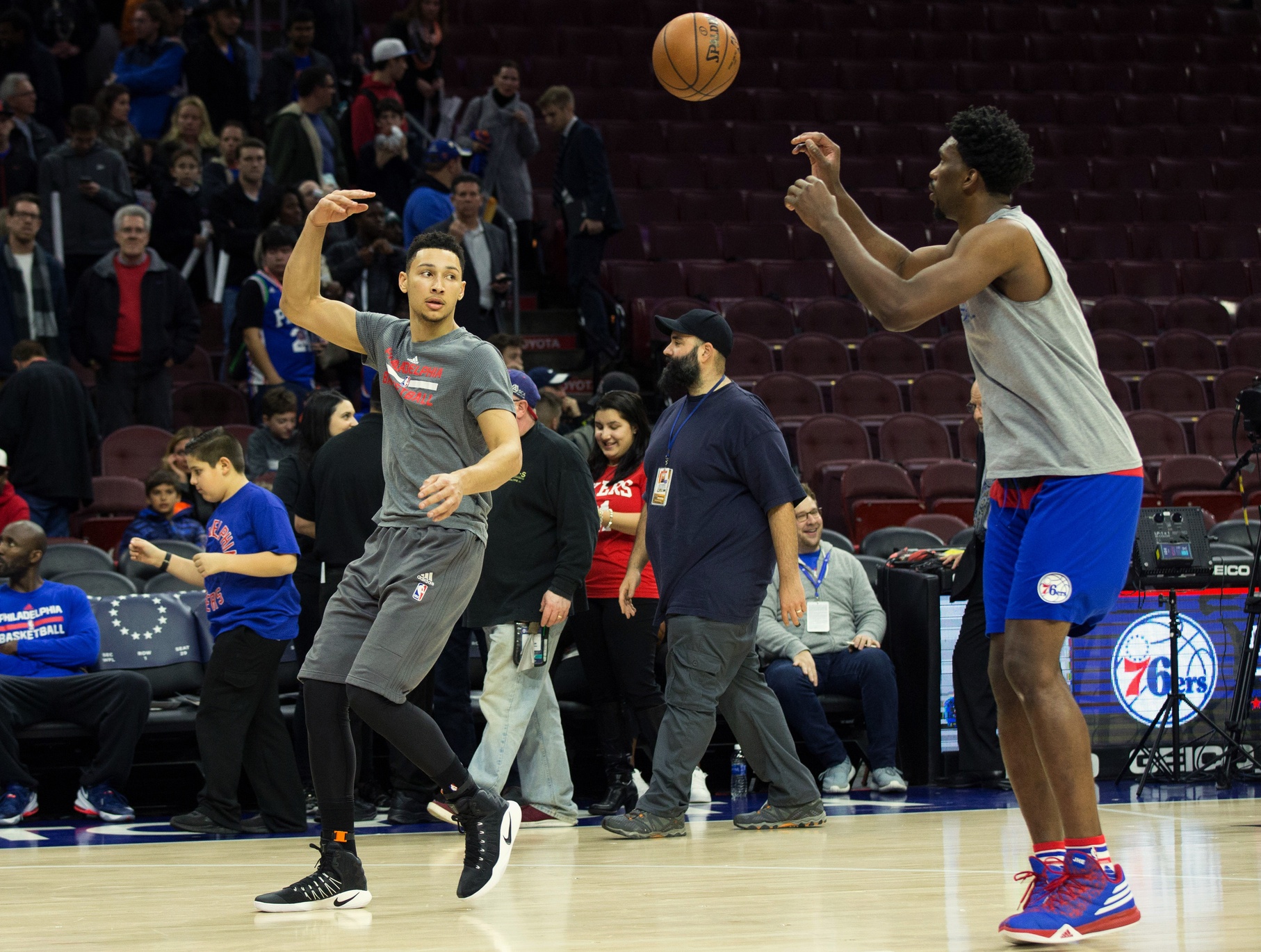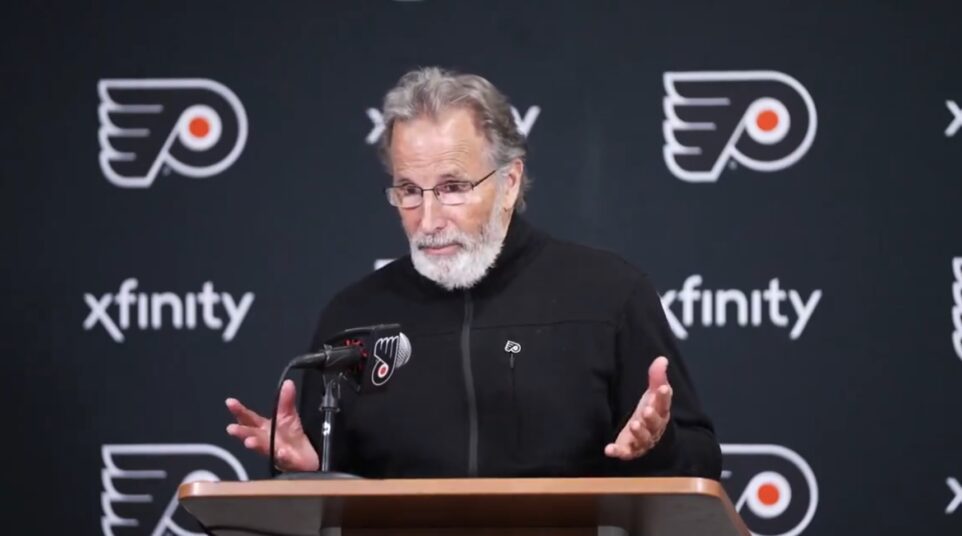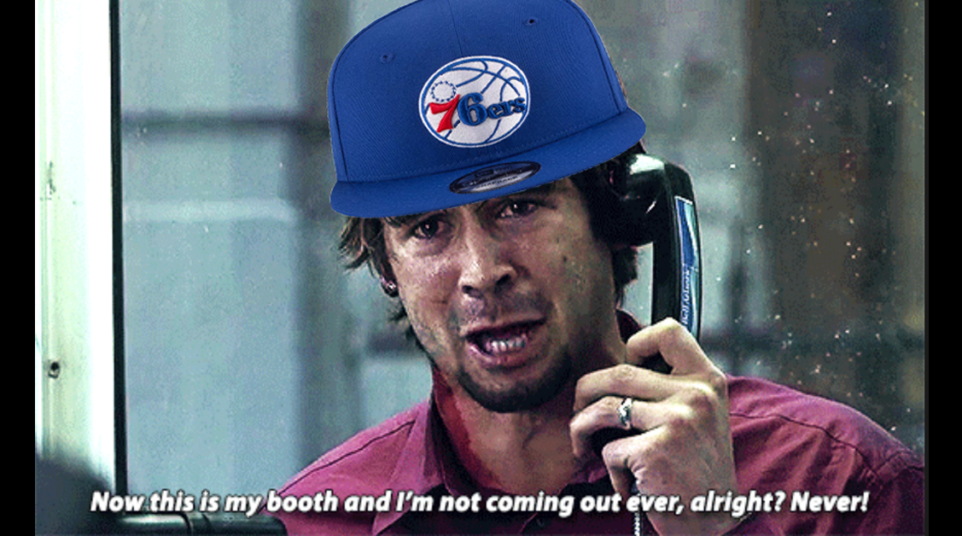
A Brief History of Recent Sixers Injuries and Their Setbacks
Here is a brief history of recent, high-profile Sixers injuries. When do we start to question the medical staff?
Andrew Bynum
October 1, 2012: A day before the start of camp, the Sixers announce that Bynum will miss three weeks with knee soreness after receiving Kobe-like injections in Germany over the summer and lube injections just prior to the start of camp. They also say he has a bone bruise in his right knee. They expect him to return to basketball-related activities by Halloween. Boo. Classification: NEW INJURY
November 12, 2012: Bynum’s return to practice is pushed back even further. The Sixers say he will begin basketball-related activities on December 10, which will likely delay his season debut until January. Classification: DELAY
November 16, 2012: In addition to the bone bruise in his right knee, Bynum says he suffered a little bit of a setback in his left knee. Classification: SETBACK
November 19, 2012: It is reported that Bynum suffered the setback while bowling. Classification: HILARIOUS NEWS
November 25, 2012: Tony DiLeo announces that Bynum will be out “indefinitely” and that his MRIs are now worse than when the Sixers traded for him. Bynum is still doing light impact rehab. Classification: DELAY
January 31, 2013: Bynum gets more joint lube. It’s unclear if this had been previously scheduled. The Sixers say Bynum may resume basketball-related activities by the following week. Classification: LUBE
February 19, 2013: Bynum pushes back his return a week or two. He says there is still pain that can not be worsened by playing on it. Classification: DELAY
March 1, 2013: It is reported that Bynum has further swelling in his knees after returning to practice. Classification: SETBACK
March 19th, 2013: Bynum undergoes season-ending surgery on both knees. Classification: DEATH
It’s here where I’ll take a moment to point out that I blogged all of this. That was four years ago. I feel like I’m stuck in a horrible reboot of Groundhog Day.
Joel Embiid
June 19, 2014: Embiid breaks his right foot and undergoes surgery before the draft. It is believed that he’ll miss most if not all of his first season. Classification: NEW INJURY
March 9, 2015: After what was thought to be a positive rehab, Embiid suffers a minor setback and is seen in a walking boot. Classification: SETBACK
June 14, 2015: After weeks of pain-free workouts, a CT scan reveals an issue in the healing process. Sam Hinkie calls it “less healing than anticipated.” Classification: SETBACK
July 11, 2015: The Sixers announce, on a Saturday night at 9 p.m., that Embiid will need a second surgery. Classification: OH FUCK
July 20th, 2015: It’s reported that Embiid’s setback was actually a re-break of the foot. Classification: TRUTH
August 18, 2015: Embiid undergoes second surgery. Classification: SURGERY
February 18, 2016: Embiid goes to Qatar for rehab. Classification: QATAR
October 27, 2016: Embiid scores 20 points in long-awaited debut. Classification: BONER
January 20, 2016: Embiid leaves game after landing awkwardly, twice, on his left knee. The injury is initially termed a “knee contusion” and then re-classified as a hyperextended knee after the game. Classification: NEW INJURY
January 27, 2017: Embiid plays (and dominates) against the Rockets on national TV. After the game, he tells reporters that he has a bone bruise that will take 2-3 weeks to fully heal. Classification: FOOLISH
February 11, 2017: Derek Bodner breaks the story that an MRI revealed that Embiid, who hasn’t played since the Rockets game, has a torn meniscus in his left knee. Classification: TRUTH
February 23, 2017: Embiid goes through a full practice for the first time in almost a month. The Sixers say he will miss at least the next four games. Classification: EXPECTATION SETTING
February 28, 2017: The Sixers say Embiid will undergo an MRI and will be out indefinitely after experiencing pain and swelling in his knee. Classification: SETBACK
Jahlil Okafor
February 27, 2016: Okafor suffers shin contusion. Brett Brown expects him to miss a game or two. Classification: NEW INJURY
March 9, 2016: After missing five games, Okafor has a CT scan on his knee for what is apparently a separate issue from his shin contusion. Classification: WTF?
March 11, 2016: The Sixers announce that Okafor has torn meniscus and will undergo minor surgery. He is expected to return to basketball-related activities in about six weeks. Classification: SURGERY
October 31, 2016: Okafor re-aggravates meniscus injury during the pre-season and starts season on a minutes restriction. Classification: SETBACK
Ben Simmons
September 30, 2016: Simmons breaks his right foot in practice. Classification: NEW INJURY
October 4, 2016: Simmons undergoes surgery on his foot. No timetable is given for his return, but the consensus recovery period for his type of injury is believed to be about three months. Classification: SURGERY
February 16, 2017: It’s reported that an MRI showed that Simmons, who has been participating in basketball-related drills but not full 5-on-5 practice, isn’t fully healed. Classification: DELAY
February 24, 2017 – Bryan Colangelo announces Simmons is done for the year after his most recent MRI showed that the bone in his foot wasn’t fully healed. Classification: DELAY
February 27, 2017: Simmons undergoes a minor procedure to inject bone marrow into his foot to promote healing. He is expected to resume training by the end of the week. Classification: BONE MARROW
…
As you can see, the Sixers under Joshua Harris and his ownership group have a long and complicated history with what often initially seem to be relatively minor injuries.
Andrew Bynum may have been a lost cause from the beginning, but he suffered continued and repeated setbacks and delays, all while taking part in both on-the-court and off-the-court activities.
Joel Embiid, Ben Simmons and, to a lesser extent, Jahlil Okafor all have suffered repeated setbacks and in some cases changes in diagnoses while under team rehab programs. If Sixers medical updates are to be taken at face value (which is a hard thing to do), contusions have twice turned into meniscus tears. Pain and swelling has turned into setbacks. And frustration has turned into surgery.
How much of this is the fault of the players? In Bynum’s and perhaps Embiid’s case, off-the-court antics may have contributed to re-aggravation of their injuries. Bynum did everything from bowling to Flamenco dancing. Embiid now infamously danced on-stage at a Meek Mill concert and was spotted on a Phunkee Duck during round 1 of his foot rehab. Only Bynum’s bowling incident has been directly linked to further injury.
But all three big-name players – Bynum, Embiid and Simmons – have experienced setbacks during various points of their rehab programs in which they were taking part in some sort of on-court activities. Embiid, specifically, returned to practice last week and was spotted shooting barefoot step-back threes… this just five days before the Sixers announced that he would undergo an MRI for pain and swelling.
In November, 2014, the Sixers announced a “groundbreaking partnership” with the Rothman Institute and Thomas Jefferson University Hospital to use their doctors and facilities. Rothman works with all four major pro sports teams. But in the case of Bynum, Embiid and Simmons, injuries have been consulted on by outside doctors, visits to New York have become commonplace, and players have taken part in some sort of unconventional rehab– Bynum went to Germany for a controversial procedure, Embiid went to Qatar, and Simmons had bone marrow injected into his foot. Still, setbacks have occurred while the players were under team supervision and taking part in programs inside the practice facility. The surgeries themselves were all reported to have been successful. It’s only after the fact that problems arose.
It’s impossible to say who is at fault– it’s most likely a combination of factors. On Friday, Bryan Colangelo, in an attempt to explain recent setbacks, said that each person is different in their recovery from a particular injury. But, the Sixers have seemingly defied odds by having multiple young, high-level athletes experience frustrating setbacks and having four (Andrew Bynum, Nerlens Noel, Joel Embiid and Ben Simmons) of them miss at least their entire first season with the club. The Sixers mostly knew going in that would be the case with Embiid and Noel – the latter isn’t even mentioned in this post because he mostly progressed as expected – but it was assumed that both Bynum and Simmons would play at some point during their first season with the team. Never mind that Embiid missed his entire second season and is now in danger of losing the rest of his third season to injury, or that both Embiid and Simmons now seem to be veering dangerously close to yet more surgery.
To be sure, the Sixers’ communication of these injuries to the public has been a problem and has deservingly gotten most of the attention, but it’s not as if Scott O’Neil and the PR staff are out on the court with crowbars re-injuring star players. Genuine medical setbacks have occurred. At a certain point, you have to wonder if the care and treatment plans are a part of the problem.





